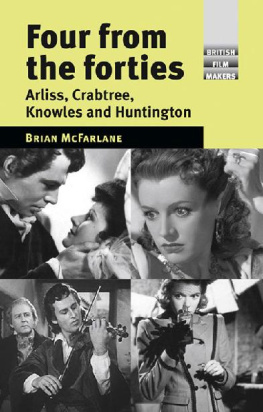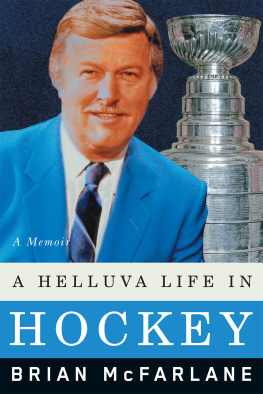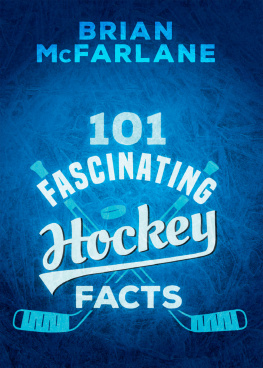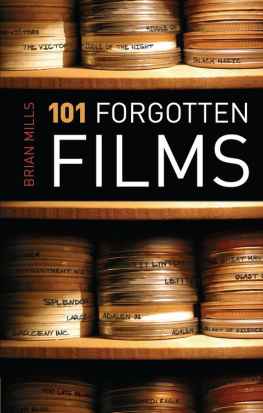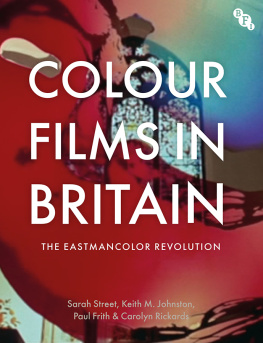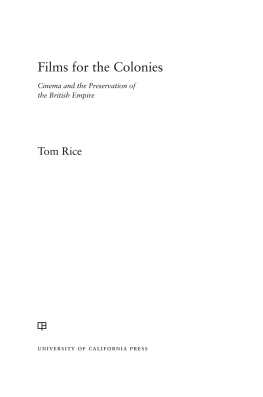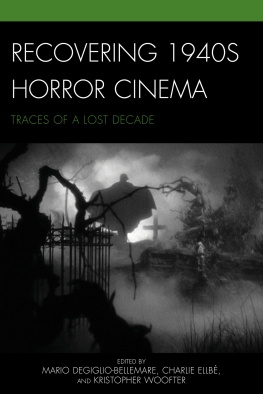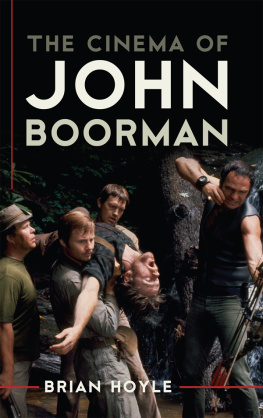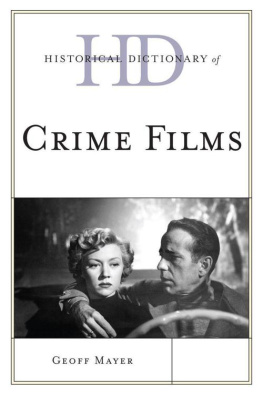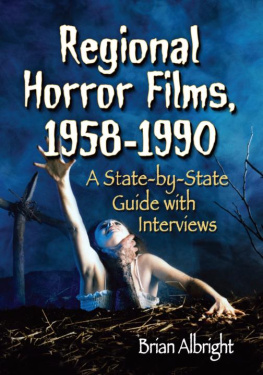Brian McFarlane - Four from the forties
Here you can read online Brian McFarlane - Four from the forties full text of the book (entire story) in english for free. Download pdf and epub, get meaning, cover and reviews about this ebook. year: 2018, publisher: Manchester University Press, genre: Art. Description of the work, (preface) as well as reviews are available. Best literature library LitArk.com created for fans of good reading and offers a wide selection of genres:
Romance novel
Science fiction
Adventure
Detective
Science
History
Home and family
Prose
Art
Politics
Computer
Non-fiction
Religion
Business
Children
Humor
Choose a favorite category and find really read worthwhile books. Enjoy immersion in the world of imagination, feel the emotions of the characters or learn something new for yourself, make an fascinating discovery.
- Book:Four from the forties
- Author:
- Publisher:Manchester University Press
- Genre:
- Year:2018
- Rating:5 / 5
- Favourites:Add to favourites
- Your mark:
- 100
- 1
- 2
- 3
- 4
- 5
Four from the forties: summary, description and annotation
We offer to read an annotation, description, summary or preface (depends on what the author of the book "Four from the forties" wrote himself). If you haven't found the necessary information about the book — write in the comments, we will try to find it.
Four from the forties — read online for free the complete book (whole text) full work
Below is the text of the book, divided by pages. System saving the place of the last page read, allows you to conveniently read the book "Four from the forties" online for free, without having to search again every time where you left off. Put a bookmark, and you can go to the page where you finished reading at any time.
Font size:
Interval:
Bookmark:


BRIAN MCFARLANE, NEIL SINYARD series editors
ALLEN EYLES, SUE HARPER, TIM PULLEINE, JEFFREY RICHARDS, TOM RYALL
series advisers
already published
Lindsay Anderson: Cinema authorship JOHN IZOD, KARL MAGEE, KATHRYN MACKENZIE, ISABELLE GOURDIN-SANGOUARD
Anthony Asquith TOM RYALL
Richard Attenborough SALLY DUX
Roy Ward Baker GEOFF MAYER
Sydney Box ANDREW SPICER
Jack Clayton NEIL SINYARD
Lance Comfort BRIAN MCFARLANE
Terence Davies WENDY EVERETT
Terence Fisher PETER HUTCHINGS
Terry Gilliam PETER MARKS
Derek Jarman ROWLAND WYMER
Humphrey Jennings KEITH BEATTIE
Launder and Gilliat BRUCE BABINGTON
David Lean MELANIE WILLIAMS
Mike Leigh TONY WHITEHEAD
Richard Lester NEIL SINYARD
Joseph Losey COLIN GARDNER
Carol Reed PETER WILLIAM EVANS
Michael Reeves BENJAMIN HALLIGAN
Karel Reisz COLIN GARDNER
Tony Richardson ROBERT SHAIL
J. Lee Thompson STEVE CHIBNALL
Michael Winterbottom BRIAN MCFARLANE AND DEANE WILLIAMS
There is a tendency among critics when writing about Leslie Arliss's three big commercial hits for Gainsborough Studios to attribute their success to the studio and thus to undermine the director's contribution, at least by implication. Whatever critics had to say about these films at the time of their release and these writers were often scathing nothing could deny their popular success, and, without invoking auteurist claims, a case must be made for Arliss as director and screenwriter on all three as at least a key collaborator in this success and in such craftsmanlike proficiency as they exhibit.
Arliss's work in the 1930s (and in his thirties) as (co-)screenwriter would scarcely seem to have prepared him for the films of his greatest successes in the following decade. Though the IMDb website lists him as uncredited co-author of the screenplay for Hitchcock's 1928 version of The Farmer's Wife , adapted from Eden Phillpotts's play, it seems likely that this is confused with the 1941 version, on which Arliss received his first credit as co-director. More reliably, he began his credited screenwriting career in 1931 with Tonight's the Night: Pass It On for British International Pictures (BIP), starring then-popular comedian Leslie Fuller. Like several others who later became directors, including Sidney Gilliat and J. Lee Thompson, Arliss had early training with BIP's scenario department. For the rest of the decade, he shares screenplay or dialogue credits or is credited as co-author of the scenario or for story or adaptation, the shared attribution of course making it difficult to account for Arliss's input.
However, watching the dozen or so of these films available for viewing, there is at least an ongoing sense of readiness to milk a comic situation for good-natured laughs and to provide established comics such as Will Hay and George Formby with material they could work to the effect their public expected of them. For instance, the fat boy, Graham Moffat, and/or the old codger, Moore Marriott, in Where There's a Will and Windbag the Sailor (both 1936) bring their distinctive physical presences to bear on some neatly contrived situations and verbally sharp exchanges in scenes involving Hay that render them still amusing eighty years on. Did Arliss (or co-writer Austin Melford) come up with If I thought you mean what I think you mean, I'd slap your face for Vera Pearce to threaten Albert Burden with in Road House (1934)?
Of the films of the decade available for this study, he received solo credit as author of the screenplay on only one film, Said OReilly to McNab (1937), though even then Marriott Edgar was credited with dialogue. The film has an amusing scenario that pits Scots against Irish, UK against US, and Will Fyffe and Will Mahony act out the stereotypes with vigour and comic know-how. But there is really not much point in trying to discern a continuing Arliss touch in these films: Hay was a sort of comic genius whose persona of shifty authority (e.g. when catapulted into captaining a ship when he had never before been to sea, in Windbag the Sailor ) could probably have risen above much less inventive screenplays than those Arliss was involved with. The same claim might be made for Formby's immaculate timing, on display in Come on George (1939), an often funny, pacey vehicle for the toothy star as an ice-cream seller who, via a chain of events too complicated (not to say improbable) to discuss here, becomes a hero of the equine racetrack.
From 1940 there was a change of generic direction for Arliss as writer. On For Freedom (1940) he shares scenario and dialogue credit with Miles Malleson for a serious and ingenious piece of wartime propaganda a quite complex amalgam of newsreel, productionstudio interaction and staged action footage depicting the battle of the River Plate. In the same year, for the Boulting brothers Charter Films, he is one of three credited with the screen story for Pastor Hall , a powerful study of the conflict faced by a German pastor who is at odds with the rise of Hitler. Angus McPhail, by this time an Ealing regular, has top billing in the screenplay credits for The Foreman Went to France (1942), his name given in larger type, and followed in order by John Dighton and Arliss, who thus probably does not deserve to be blamed for its tonal uncertainty as it moves between serious wartime exploit and ill-fitting comic inserts to exploit Tommy Trinder's personality.
Released in the same month, June 1942, was Arliss's directorial debut, The Night Has Eyes . The full credit reads: Written and directed by Leslie Arliss, and the film remains a lively enough thriller, which begins in comic mode before settling into full-blown melodrama, with murder on the moors, a house that seems to have secrets, and a lot of shadowy effects, all enhanced by Gnther Krampf's evocative cinematography and Duncan Sutherland's art direction. Produced by John Argyle, adapted from Alan Kennington's novel, made at Welwyn Studios (one of the few studios that was not requisitioned at the outbreak of war ) and distributed by ABPC, it is in fact a melodramatic precursor of Arliss's time at Gainsborough, which began a year later. This feeling is intensified by the casting of James Mason as the handsome, enigmatic, possibly cruel protagonist.
At the end of term, two young schoolmistresses, Marion (Joyce Howard) and American Doris (Tucker McGuire), are going on holiday to the Yorkshire moors where a colleague, poor Evelyn, was lost the year before. The sniffy headmistress of Carne School suspects they are going off chasing men, believing Doris is no lady, but an older teacher (Amy Dalby) chides her with: Remember, she isn't English. A police officer warns them not to go trekking over the moors in the poor weather, but nevertheless they head off in thickening fog and rain, and Doris inevitably gets stuck in a bog from which Marion has to rescue her. A flash of lightning illuminates a house and a man with a torch who grudgingly takes them in. As Michael Omasta writes: There is one superb scene early on in the film where we first see Mason and the old dark house that stands stark and brooding in silhouette amidst the storm with the single small frame of an open door ominously lit up. Apart from the dramatic effect they created, fog and storm were perfect cover for the use of miniatures disappearing in the depths of the moor, obviously to great success. Considering the film was made entirely at Welwyn Studios, it no doubt needed all the help it could get in creating its sense of a remote place and mystery.
Font size:
Interval:
Bookmark:
Similar books «Four from the forties»
Look at similar books to Four from the forties. We have selected literature similar in name and meaning in the hope of providing readers with more options to find new, interesting, not yet read works.
Discussion, reviews of the book Four from the forties and just readers' own opinions. Leave your comments, write what you think about the work, its meaning or the main characters. Specify what exactly you liked and what you didn't like, and why you think so.

